
JWM Certification FAQs
Welcome to the FAQ section of JWM Certification Here, we address common queries related to ISO certifications, including ISO 9001:2015. Whether you’re just starting your certification journey or looking to deepen your understanding, we’ve got you covered.


What Is ISO 9001?
ISO 9001 is the leading global standard for Quality Management Systems (QMS). Employed in over 178 countries, it provides organizations with a framework to ensure they consistently deliver quality products and services. Rather than dictating specific management practices, ISO 9001 offers a flexible approach that can be tailored to any organization’s needs.
What Are The Advantages of ISO Certification?
Achieving ISO 9001 certification can yield numerous benefits, such as:
- Consistently high product quality
- Increased customer satisfaction
- Enhanced operational efficiency
- Improved risk management
- Greater market credibility, as many businesses prefer partnering with ISO-certified organizations.
Who Should Consider ISO 9001 Certification?
ISO 9001 is suitable for organizations of all sizes and sectors, including automotive, aerospace, healthcare, and manufacturing. Any business aiming to improve its quality management practices and enhance its market position should consider certification.
How Does The ISO 9001 Certification Process Work?
To obtain ISO 9001 certification through JWM Certification, an organization must:
- Implement the standard effectively.
- Undergo a two-stage Initial Certification Audit conducted by an accredited certification body.
- Demonstrate that the Quality Management System has been active for at least three months and has undergone internal audits and management reviews.
- After certification, annual surveillance audits and re-certification audits every three years are required.
What Are The Costs Associated With ISO 9001 Certification?
The costs for ISO 9001 certification can vary widely based on factors such as:
- The size and complexity of your organization
- The duration of the audit
- Preparation and training needed to meet the standards For a precise quote, it’s best to reach out to JWM Certification directly.
What Are The Key Changes in ISO 9001:2015?
One of the most significant changes in the 2015 revision is the introduction of Annex SL, which provides a standardized structure for all ISO management system standards, making integration easier across different systems.
Is A Management Representative Required For ISO 9001?
No, ISO 9001:2015 does not mandate a designated management representative. However, you will still need a point of contact for certification-related matters.
What Risks Might ISO 9001 Identify in Exporting?
Potential risks in exporting could include inaccuracies in export documentation, compliance with licensing, and exposure to price fluctuations. Understanding these risks is crucial for effective quality management.
Is ISO 9001:2015 More Complex Than Previous Versions?
While ISO 9001:2015 is not inherently more complicated, it does require a higher level of professional judgment and understanding than earlier versions.
Do All Management Review Elements Need To Be Addressed in One Meeting?
Not necessarily. You can cover the elements of the management review across multiple meetings, as long as you maintain documented evidence of the review process.
How Should Documentation Be Managed Under ISO 9001?
Organizations can approach documentation in various ways, such as using a risk register or creating detailed process flows to identify and mitigate risks effectively.
How Do Risks Influence Control Measures in ISO 9001?
Identified risks will help shape the necessary control measures to mitigate those risks, ensuring that processes remain robust and effective.
Should Every Process Have Identified Risks?
Yes, documenting risks associated with processes is essential for a comprehensive quality management approach.
How Can Visual Process Mapping Help?
While not a requirement, visual process mapping can significantly enhance understanding and communication of your processes, making it easier to identify potential risks and areas for improvement.
Will ISO Auditors Expect More Rigor in Systems?
ISO auditors will continue to look for robustness in management systems, regardless of the documentation approach. The focus is on effectiveness, not merely on documentation.
What Is The Difference Between "Maintained" and "Retained" Information?
“Maintained” refers to the upkeep of system elements, such as infrastructure, while “retained” refers to preserving documented records for evidence.
How Can Senior Management Be Engaged in Risk Management?
Incorporating risk management into discussions about system requirements and using relevant terminology can effectively engage senior management.
What Are Management-Oriented and Support Processes?
Management-oriented processes directly relate to the overall system (e.g., management reviews), while support processes enhance the system’s effectiveness (e.g., training, document control).
What Should A Business Risk Register Include?
A documented risk register should identify both internal and external risks and serve as a tool for recognizing and addressing the organization’s needs.
Do You Need To Renumber Your QMS Documentation?
No, renumbering is not required. You can retain your existing numbering while expanding your documentation to cover new criteria as needed.
Can ISO 9001 and ISO 27001 Be Managed Jointly?
Yes, a combined risk management approach can be beneficial, depending on your organization’s specific needs.
How Is Leadership Measured in ISO 9001?
Effective leadership can be assessed through visibility, inclusivity, and clear communication of the organization’s vision and goals.
How Does JWM Certification Track the Transition to ISO 9001?
Our team at JWM Certification works closely with clients to monitor progress toward certification. Speak to your designated consultant to establish where you are in the transition process.
How Do Changes to ISO 9001 Affect Integrated Management Systems?
The introduction of Annex SL facilitates easier integration across various management systems (e.g., ISO 9001, ISO 14001). Careful planning around transition dates is essential.
If you have any further questions or need personalized assistance, feel free to contact JWM Certification.

